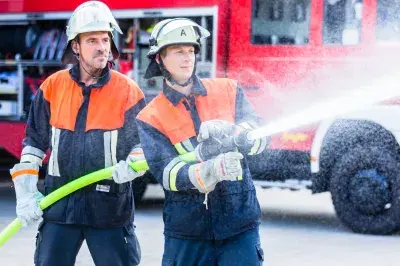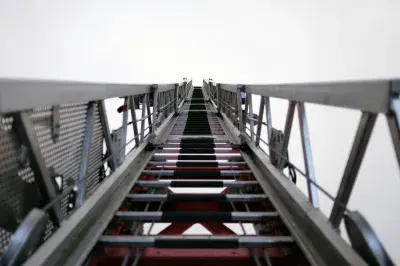Defensive fire protection and preventive fire protection are closely linked, but they have different objectives and responsibilities.
Fire prevention - Objectives
Defensive fire protection refers to measures to fight fires after they have already broken out. They are fought by the fire brigade. Three objectives dominate in defensive fire protection:
- Protect human life: People who could not save themselves are brought to safety by the emergency services.
- Fighting fire: The fire brigade's goal is to extinguish the fire.
- Minimise fire damage: Damage caused by a fire is kept as low as possible. This includes smoke poisoning, damage caused by extinguishing water as well as environmental damage.

Fire prevention - Responsibilities

The fire brigades are primarily responsible for fire prevention. They can fight an outbreak of fire through tactics, attack strategy and appropriate extinguishing equipment. This responsibility overlaps with preventive fire protection. In order to ensure that sufficient water is available for extinguishing fires, fire water tapping points must be provided, for example. In the case of certain fire protection facilities, replacement as well as obtaining approval with authorities and the fire service is mandatory. As a fire protection service provider, we know these special features, coordinate and obtain the appropriate permits. Please feel free to contact us.
Defensive fire protection - Examples
There are a number of measures that are part of defensive fire protection, a few examples are given below:
- Firefighting: Use of fire hoses, fire engines, firefighting aircraft and other specialised firefighting equipment.
- Evacuation: Rescue of people from affected buildings. If necessary, using aids such as ladders, rescue ropes, rescue couches, rescue seats or other types of rescue equipment.

- Fire and smoke dispersion: Partitioning by fire walls or barriers as well as intervening in the ventilation control of a building to contain the spread of smoke.
- Water supply: Ensuring an adequate source of water for the fire brigade, such as hydrants or other water tapping points.

Fire prevention and fire protection complement each other and are important components of a comprehensive fire protection concept. If you have any questions about preventive or defensive fire protection, please do not hesitate to contact us.
